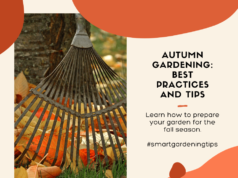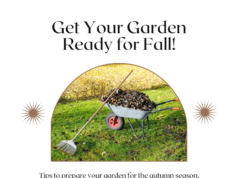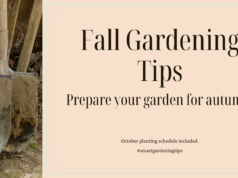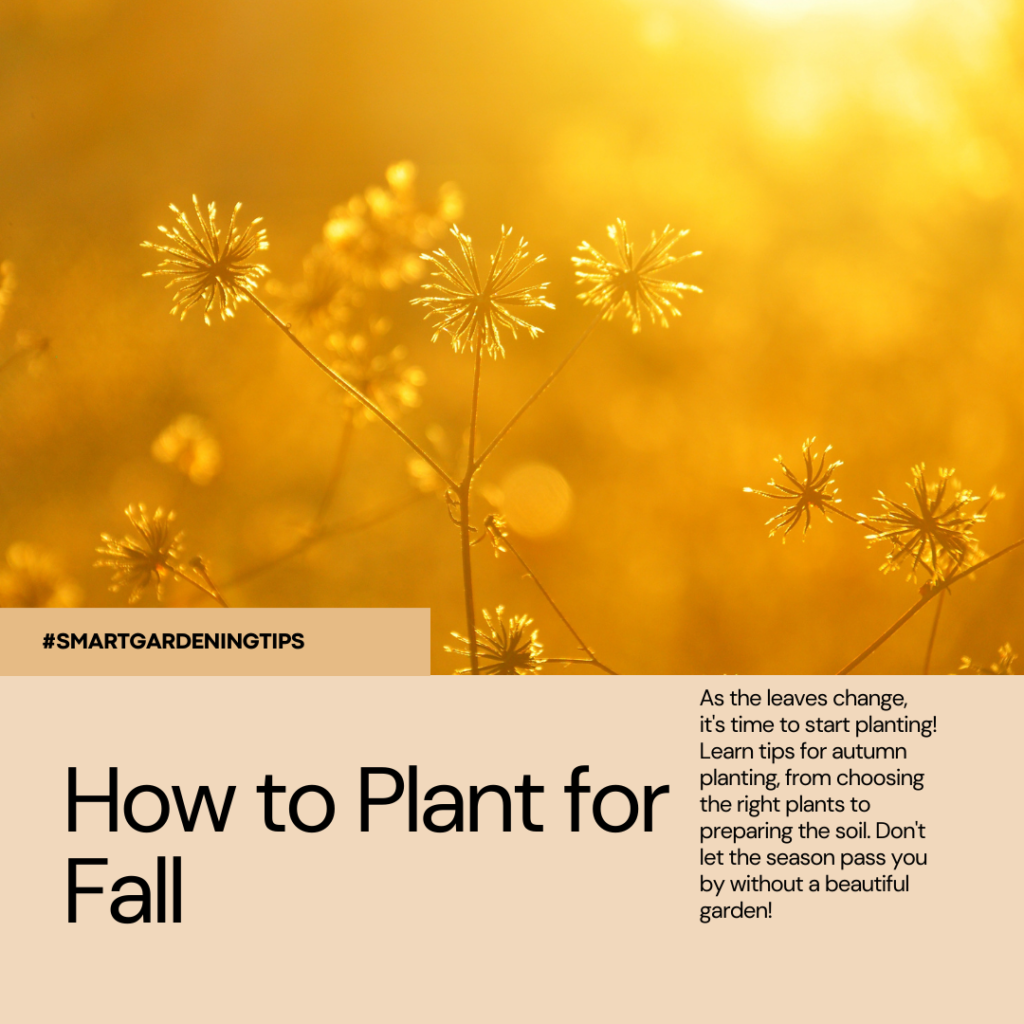
Welcome to our guide on autumnal planting! As the fall season approaches, it’s time to prepare your garden for a burst of beauty and health. Autumnal planting is a wonderful opportunity to enhance your garden’s beauty and ensure the vitality of your plants. In this article, we will share essential tips to help you make the most of this season and create a magnificent autumn landscape.
Whether you’re a seasoned gardener or new to the world of planting, our expert advice will guide you through the process. From choosing the right plants to caring for them throughout the season, we’ll cover everything you need to know. So grab your gardening gloves and let’s dive into the wonderful world of autumnal planting!
Key Takeaways:
- Autumnal planting can enhance the beauty and health of your garden during the fall season.
- Choosing the right plants is key to successful autumn planting.
- Proper preparation, including considering climate and soil conditions, is essential.
- Creating the right soil conditions ensures optimal growth and health.
- A well-planned layout and arrangement of plants contribute to a visually stunning garden.
Choosing the Right Plants for Autumn Planting
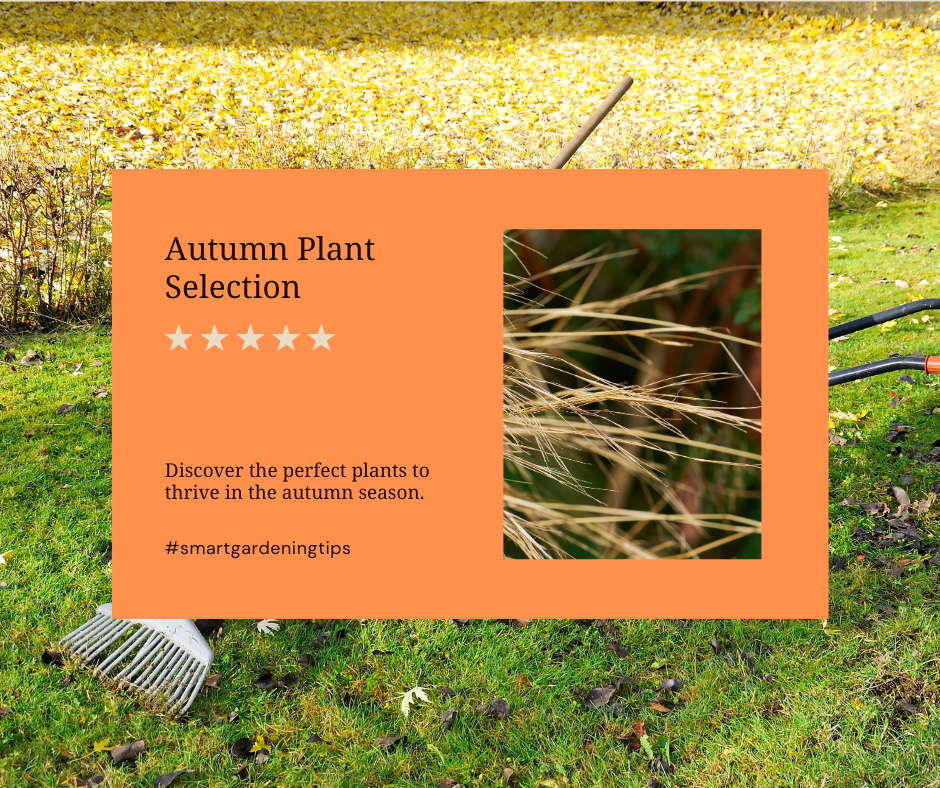
Before you begin your autumn planting, it’s crucial to choose the right plants that are suitable for the fall season and will thrive in your specific climate and soil conditions.
When selecting plants for autumn planting, consider the following:
- Choosing the right plants for the fall season: Look for plant varieties that are well-suited for autumn planting. These plants are often hardy and can withstand the cooler temperatures and changing weather conditions.
- Consider your climate: Take into account the specific climate of your region when choosing plants for autumn planting. Some plants may be more suitable for colder regions, while others may thrive better in milder climates.
- Soil conditions: Evaluate the soil conditions in your garden. Choose plants that will thrive in the type of soil you have, whether it’s sandy, loamy, or clay-based. Consider making any necessary soil amendments to improve its fertility and structure.
- Plant size and spacing: Consider the mature size of the plants you choose and ensure you have enough space in your garden for proper growth. Avoid overcrowding, as it can lead to poor airflow and increased susceptibility to diseases.
By choosing the right plants for autumn planting, you can set the foundation for a thriving and visually stunning autumn garden.
Recommended Plant Varieties for Autumn Planting
| Plant | Sunlight Requirements | Watering Needs | Frost Tolerance |
|---|---|---|---|
| Chrysanthemums | Full sun to partial shade | Regular watering | Frost tolerant |
| Pansies | Full sun to partial shade | Regular watering | Cold-hardy |
| Ornamental Kale | Full sun to partial shade | Regular watering | Cold-hardy |
| Sedum | Full sun | Drought-tolerant | Cold-hardy |
These are just a few examples of plant varieties that are suitable for autumn planting. Incorporate them into your garden to add vibrant colors and textures, creating a captivating autumn display.
Preparation for Autumn Planting
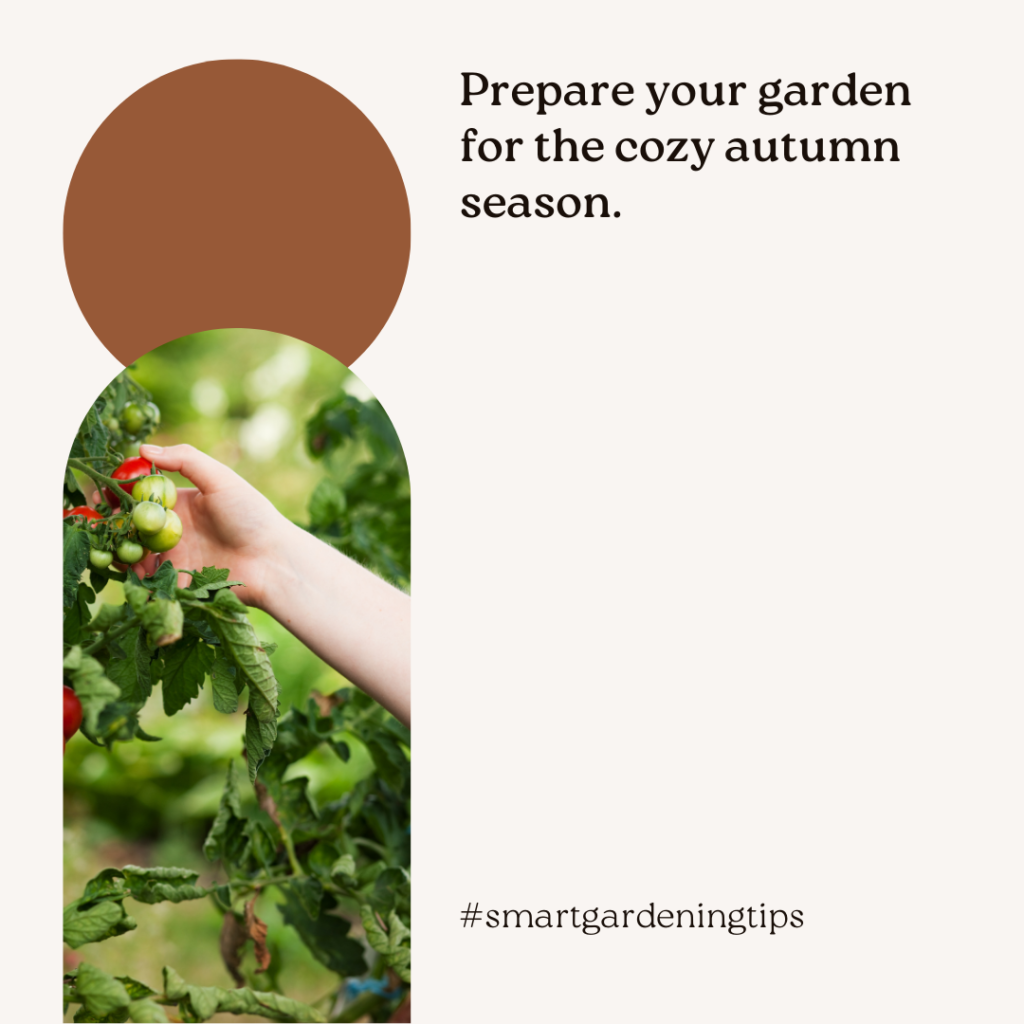
Proper preparation is crucial for successful autumn planting. To ensure optimal growth and health for your plants, it is essential to consider the climate and soil conditions specific to your area.
Before you begin planting, take the time to assess the climate in your region. Researching the average temperatures, rainfall patterns, and frost dates will help you determine which plants are best suited for your garden. Some plants thrive in cooler temperatures, while others prefer milder climates. By selecting plants that are well-suited to your local climate, you can maximize their chances of flourishing in the autumn season.
The soil conditions in your garden are another critical factor to consider before embarking on autumn planting. Assess the composition and fertility of your soil, as this will impact the growth and overall health of your plants. Conduct a soil test to determine the pH level, nutrient content, and drainage properties. This information will guide you in making any necessary amendments to improve the soil quality and ensure it provides an optimal environment for plant growth.
Once you have considered the climate and soil conditions, you can begin preparing your garden for autumn planting. Clear the garden beds of any weeds or debris, ensuring a clean and tidy space for your new plants. If necessary, till the soil to loosen it and promote better root penetration. Incorporate organic matter, such as compost or well-rotted manure, to enrich the soil and provide essential nutrients.
As you prepare for autumn planting, it is also beneficial to create a planting plan. Consider the size, spacing, and placement of each plant to achieve an aesthetically pleasing and well-organized garden. Take into account the height and spread of each plant, as well as their growth habits, to ensure they have ample space to thrive.
By carefully considering climate and soil conditions and adequately preparing your garden, you can lay a solid foundation for successful autumn planting. Your plants will have the best possible start, leading to vibrant and thriving foliage throughout the fall season.
| Climate Considerations | Soil Conditions | Garden Preparation |
|---|---|---|
| Research average temperatures and frost dates in your region | Assess soil composition, fertility, and drainage | Clear garden beds of weeds and debris |
| Select plants suitable for your local climate | Conduct a soil test to determine pH level and nutrient content | Till the soil to improve root penetration |
| Consider the temperature preferences of different plant varieties | Amend the soil with organic matter to enrich its quality | Incorporate compost or well-rotted manure for added nutrients |
| Create a planting plan to optimize space and arrangement |
Setting Up Proper Soil Conditions
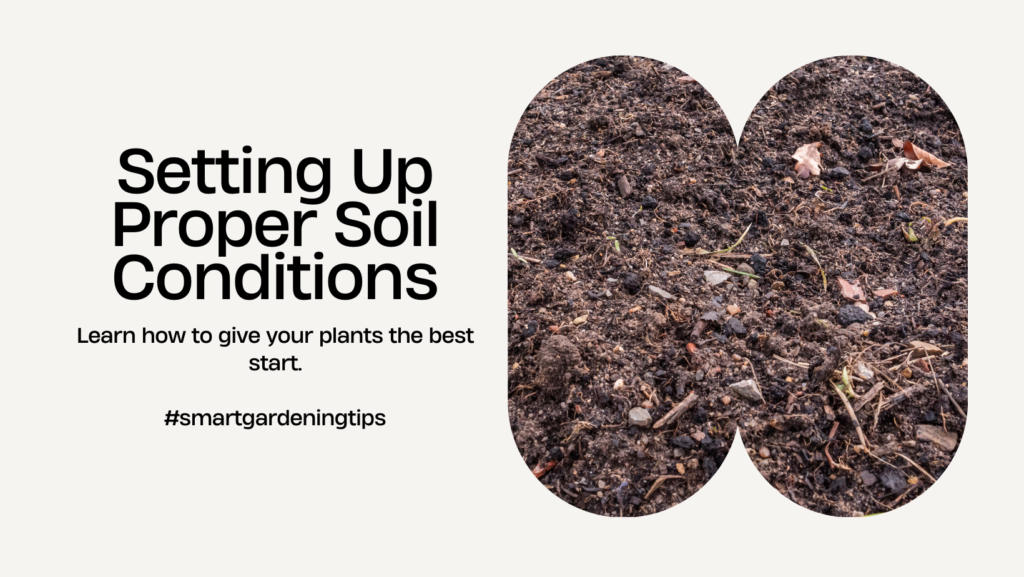
When it comes to autumn planting, setting up proper soil conditions is essential for the health and success of your plants. Establishing a nutrient-rich and well-structured soil will provide an optimal environment for them to thrive. Follow these steps to prepare and amend your soil for autumn planting.
1. Assess Your Soil
Begin by assessing your soil’s composition and fertility. Take a sample and analyze it to determine its pH level, nutrient content, and texture. This will help you understand any deficiencies or imbalances that need to be addressed.
2. Add Organic Matter
One of the most effective ways to improve soil conditions is by incorporating organic matter. Compost, well-rotted manure, or leaf mold can be mixed into the soil to enhance its structure, drainage, and nutrient-holding capacity. Aim for a ratio of one-third organic matter to two-thirds soil.
3. Adjust pH Levels
Some plants have specific pH requirements for optimal growth. Use a soil testing kit or send a sample to a local agricultural extension office for analysis. Based on the results, amend the soil with lime to raise the pH or sulfur to lower it, ensuring a suitable pH range for your chosen plants.
4. Provide Adequate Drainage
Proper drainage is crucial for plant health as it prevents waterlogged soil, which can lead to root rot and other issues. If your soil has poor drainage, consider incorporating organic matter or using raised beds to improve water flow.
5. Consider Mulching
Mulching is beneficial for autumn planting as it helps regulate soil temperature and moisture levels while suppressing weed growth. Apply a layer of organic mulch around the base of your plants, leaving a space around the stem to prevent rot.
6. Regularly Test and Amend
Soil conditions can change over time, so it’s essential to regularly test and amend your soil as needed. Monitor the pH level, nutrient content, and overall health of your plants to identify any deficiencies or imbalances that require attention.
By setting up proper soil conditions, you are laying the foundation for a successful autumn planting season. Your plants will have the essential nutrients, proper pH levels, and optimal structure needed for healthy growth. Take the time to prepare and amend your soil, and you will be rewarded with a thriving and beautiful garden.
Planning and Arrangement of Plants
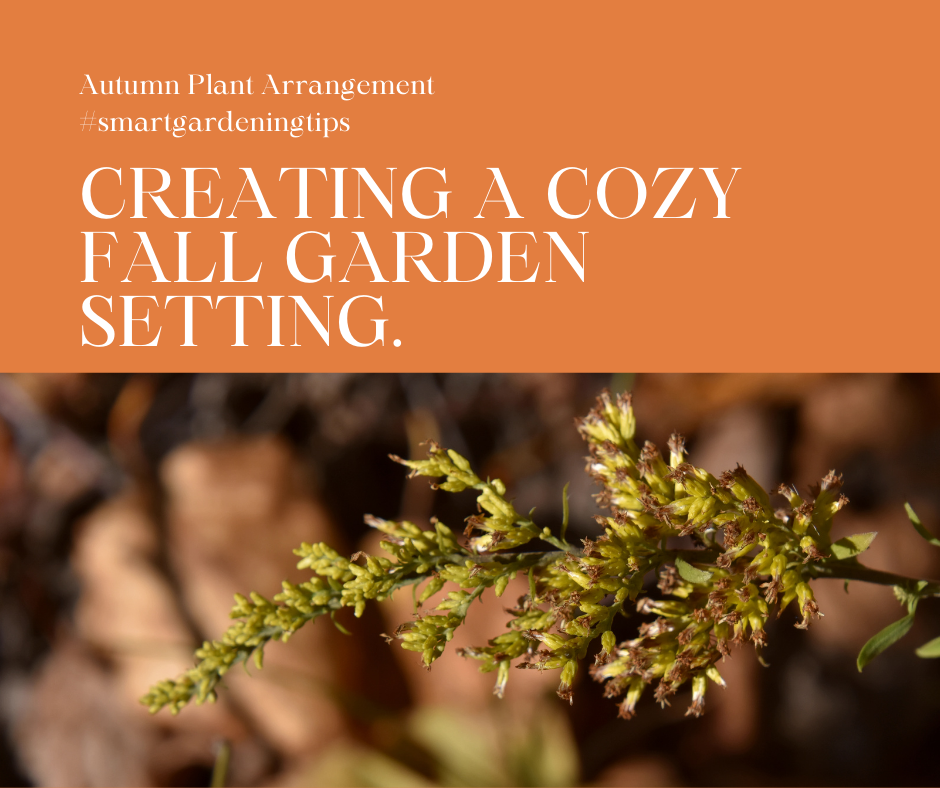
Creating a visually stunning autumn garden requires careful planning and strategic arrangement of your plants. By considering the planning and arrangement of plants during the autumn planting process, you can achieve a harmonious and aesthetically pleasing display that enhances the overall beauty of your garden.
When planning your garden, take into account the different heights, colors, and textures of the plants you want to include. Think about how these elements will complement one another and create visual interest. Consider plants with vibrant autumn foliage, such as maples, birches, or ornamental grasses, to add a splash of warm colors to your garden.
Grouping plants with similar care requirements together can make maintenance easier and ensure that each plant thrives. This approach allows you to optimize watering, fertilization, and other care practices specific to each group, promoting their health and growth.
Another important aspect of plant arrangement is considering their growth habits and mature sizes. Arrange plants in a way that allows each one to have adequate space to spread and grow without overcrowding. This will prevent competition for nutrients, light, and water, ensuring healthier plants and a more balanced garden ecosystem.
You can also create visual interest by incorporating different layers in your garden. Place taller plants at the back or center, medium-sized plants in the middle, and low-growing plants or groundcovers at the front. This layering technique adds depth and dimension to your garden, making it visually appealing from different angles.
Consider using containers or raised beds for plants that require better drainage or have invasive growth habits. These can be strategic focal points or accents that add interest and variety to your garden’s overall design.
Expert Tip:
When arranging plants, keep in mind the principles of color theory. Colors opposite each other on the color wheel, like purple and yellow or red and green, create a visually striking contrast that can make your garden even more captivating.
To give you a better idea of how to plan and arrange your plants for an autumn garden, take a look at the example below:
| Plant Name | Height | Color |
|---|---|---|
| Japanese Maple | 6-12 feet | Red, Orange, Yellow |
| Black-Eyed Susan | 2-3 feet | Yellow, Orange |
| Blue Fescue | 6-12 inches | Blue-Green |
| Purple Coneflower | 2-5 feet | Purple, Pink |
With this example, you can see how different plants with varying heights and colors can be strategically arranged to create a visually stunning autumn garden. The Japanese Maple provides a tall and dramatic centerpiece, while the Black-Eyed Susan and Purple Coneflower add pops of vibrant color. The Blue Fescue adds contrasting texture and color to the foreground, completing a well-balanced and visually appealing arrangement.
By putting thought into the planning and arrangement of plants for your autumn garden, you can ensure a beautiful and harmonious landscape that will be the envy of your neighborhood. With the right choices and arrangements, your garden will be a sight to behold throughout the fall season.
Timing and Temperature Considerations for Autumn Planting
When it comes to autumn planting, timing and temperature are crucial factors that can significantly impact the success of your gardening endeavors. Understanding the right timing for different plant varieties and the optimal temperature ranges for their growth is essential for ensuring thriving and healthy plants.
First and foremost, it’s important to consider the specific timing for autumn planting. While the fall season is generally ideal for planting, it’s essential to take into account the specific needs of each plant species.
Some plants thrive when planted in early autumn when the weather is still relatively warm, while others prefer to be planted closer to the first frost. Understanding the preferred timing for different plants will help maximize their chances of establishment before the onset of winter.
Additionally, you should pay close attention to temperature considerations during the autumn season. Plants have varying temperature preferences, so it’s crucial to select varieties that are suited to your specific climate. Some plants are more cold-tolerant and can withstand lower temperatures, while others are more sensitive and require milder conditions.
To ensure that your plants thrive, monitor the temperature ranges in your area and select plants that are well-suited to those conditions. This will help prevent damage caused by extreme temperatures and promote healthy growth.
| Plant Variety | Ideal Planting Time | Temperature Range |
|---|---|---|
| Spring bulbs (tulips, daffodils) | Early autumn | 50°F – 60°F (10°C – 15°C) |
| Perennial flowers | Late summer or early fall | 60°F – 70°F (15°C – 21°C) |
| Leafy greens (lettuce, spinach) | Moderate temperatures | 50°F – 70°F (10°C – 21°C) |
| Woody shrubs (hydrangeas, lilacs) | Early to mid-fall | 50°F – 70°F (10°C – 21°C) |
Remember, proper timing and temperature considerations are essential for setting your plants up for success during the autumn planting season. By aligning planting schedules with optimal temperature ranges, you can ensure the health and vigor of your garden throughout the cooler months.
Care and Maintenance of Autumn-Planted Vegetation
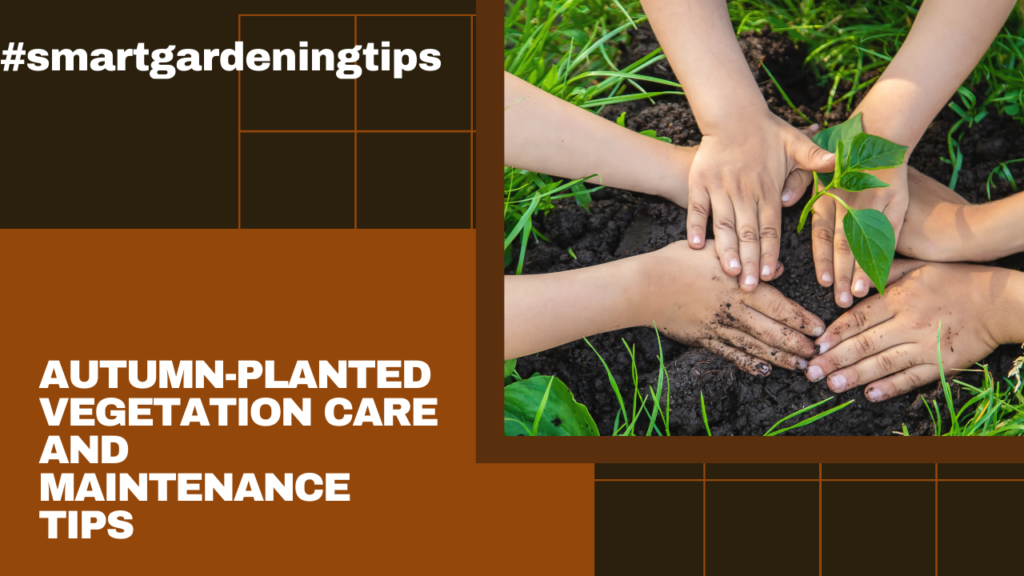
Proper care and maintenance are essential for ensuring the health and vitality of your autumn-planted vegetation. By following watering and fertilization guidelines, you can keep your plants thriving throughout the season.
Watering Guidelines
As the weather begins to cool down in autumn, it’s important to adjust your watering routine accordingly. While the watering needs of different plants may vary, in general, it’s best to water deeply and infrequently to encourage deep root growth.
Watering Tip: Use a moisture meter or simply check the soil moisture level with your finger. If the top few inches of soil feel dry, it’s time to water.
- Consider your specific plant’s needs: Some plants may require more frequent watering, while others are more drought-tolerant.
- Water early in the day: Watering in the morning allows plants to absorb moisture before the heat of the day, reducing the risk of evaporation.
- Avoid overwatering: Ensure proper drainage to prevent waterlogged soil, which can lead to root rot and other issues.
Fertilization Guidelines
Fertilization is crucial for providing essential nutrients to your autumn-planted vegetation. While each plant may have specific requirements, the following general guidelines can help ensure healthy growth:
“Fertilizing your plants is like giving them a nutritious boost for vibrant health.”
- Choose the right fertilizer: Look for a balanced all-purpose fertilizer or one specifically formulated for the type of plant you are growing.
- Follow the instructions: Read and follow the manufacturer’s instructions for dosage and application frequency.
- Timing is key: Apply fertilizer at the appropriate time, considering the specific needs of your plants. For example, some plants may benefit from a late summer or early autumn feeding.
- Avoid excess: Overfertilization can lead to nutrient burn and damage to your plants. Stick to the recommended amount and avoid applying fertilizer when the soil is dry.
Remember: Regular monitoring of your plants is crucial to detect any signs of nutrient deficiencies or overfertilization. Adjust your care routine accordingly to maintain optimal plant health.
By properly caring for and maintaining your autumn-planted vegetation, you can enjoy a flourishing garden filled with vibrant colors and healthy plants throughout the fall season. Keep in mind that different plants have specific requirements, so always consider their individual needs for water, nutrients, and other care aspects.
Protection Against Pests and Diseases
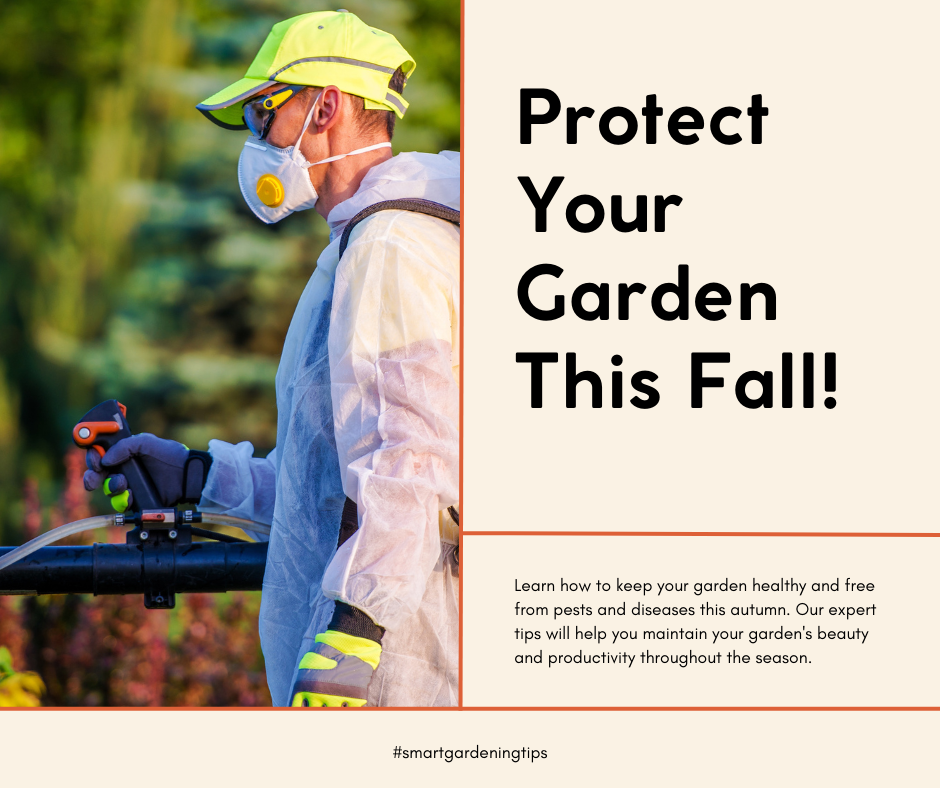
When it comes to autumn planting, protecting your plants from pests and diseases is of utmost importance. The changing weather conditions and cooler temperatures create an environment where pests and diseases thrive. To ensure the health and beauty of your garden, it is essential to implement effective strategies and preventive measures.
Identify and Monitor
One of the first steps in protecting your plants is to be able to identify the pests and diseases that commonly affect them in the autumn season. Regularly inspect your plants for any signs of infestation or infection, such as discolored leaves, holes, or wilting.
Keep a close eye on your plants and monitor any changes in their appearance or behavior. Early detection can prevent the spread of pests and diseases and minimize any potential damage.
Natural Remedies
Consider using natural remedies to combat pests and diseases. These can be safer alternatives to chemical pesticides, minimizing the impact on the environment and the health of your plants.
For example, garlic spray can help deter insects, while neem oil can be effective against fungal diseases. Research natural remedies specific to the pests and diseases you are dealing with and use them accordingly.
Plant Diversity
Creating a diverse planting scheme can naturally discourage pests and diseases. By planting a variety of species, you can disrupt pest life cycles and minimize the risk of widespread infestation.
Intercropping, the practice of growing different plants together, can also act as a deterrent. Certain plants naturally repel pests, making it more difficult for them to establish a presence in your garden.
Proper Plant Care
Healthy plants are more resilient to pests and diseases. Provide adequate water, sunlight, and nutrients to your plants to strengthen their immune systems and promote their overall well-being.
Regularly remove dead or decaying plant material from your garden. This helps eliminate potential hiding places for pests and reduces the risk of disease spread.
Quarantine and Removal
If you discover a plant that is severely infested or infected, it is important to act quickly to prevent the pests or diseases from spreading to other plants. Quarantine the affected plant by isolating it from the rest of the garden to limit the risk of transmission.
In some cases, you may need to remove and dispose of the affected plant to prevent further damage. Consult with a local gardening expert or extension service to determine the best course of action.
By employing these protective measures, you can safeguard your garden against pests and diseases, ensuring the health and longevity of your autumn-planted vegetation.
| Pest/Disease | Prevention | Treatment |
|---|---|---|
| Aphids | Introduce beneficial insects like ladybugs that prey on aphids. Regularly hose down plants to dislodge aphids. | Use insecticidal soap or neem oil spray to control large infestations. |
| Powdery Mildew | Ensure proper spacing between plants for good air circulation. Avoid overhead watering. | Apply fungicidal sprays or mixtures containing baking soda and water. |
| Slugs and Snails | Create physical barriers such as copper tape or diatomaceous earth around susceptible plants. | Set up traps with beer or yeast-based baits to attract and drown slugs and snails. |
| Plant Viruses | Choose disease-resistant plant varieties. Maintain good garden hygiene by removing and disposing of infected plants. | There is no cure for plant viruses. Infected plants should be removed and destroyed. |
Landscaping and Aesthetics in Autumn
Embrace the beauty of autumn by incorporating the vibrant colors and captivating textures of the season into your landscape design. Fall provides a unique opportunity to create visual interest and enhance the overall aesthetics of your outdoor space. Here are some tips to help you make the most of the enchanting autumn landscape.
1. Fall Foliage
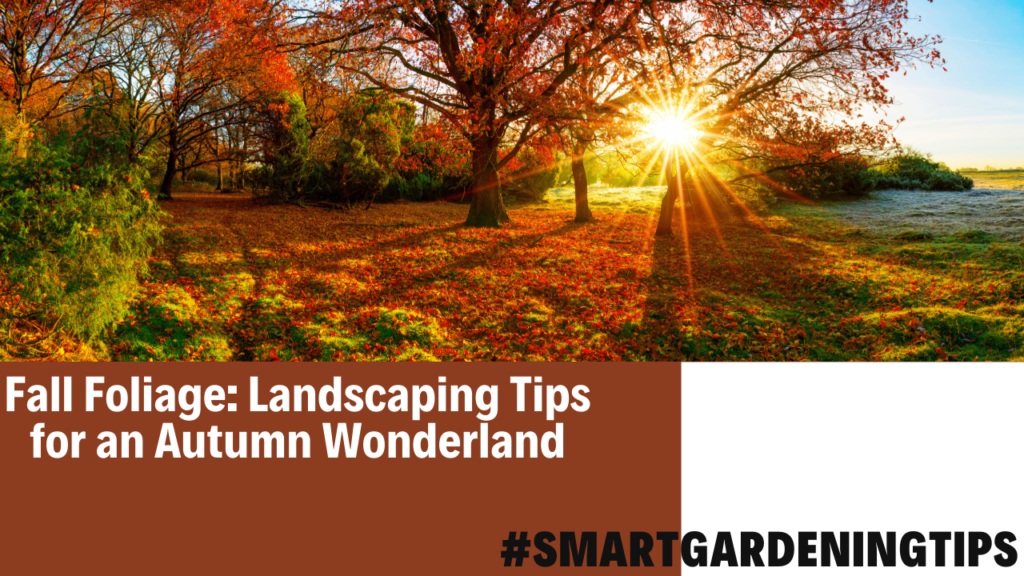
- Take advantage of the striking hues of autumn foliage by incorporating trees and shrubs that display vibrant reds, oranges, and yellows. Consider species like Acer rubrum (Red Maple), Quercus rubra (Northern Red Oak), and Fothergilla gardenii (Dwarf Fothergilla) to add a touch of autumnal magic to your garden.
- Position these trees strategically throughout your landscape to create focal points and visual depth. Cluster them near your home’s entrance or along walkways for an inviting and picturesque effect.
- Combine different types of foliage with varying colors and textures to add visual interest and create a dynamic contrast. Mix bold, colorful leaves with more delicate and feathery foliage for a harmonious blend.
2. Autumn Flowers
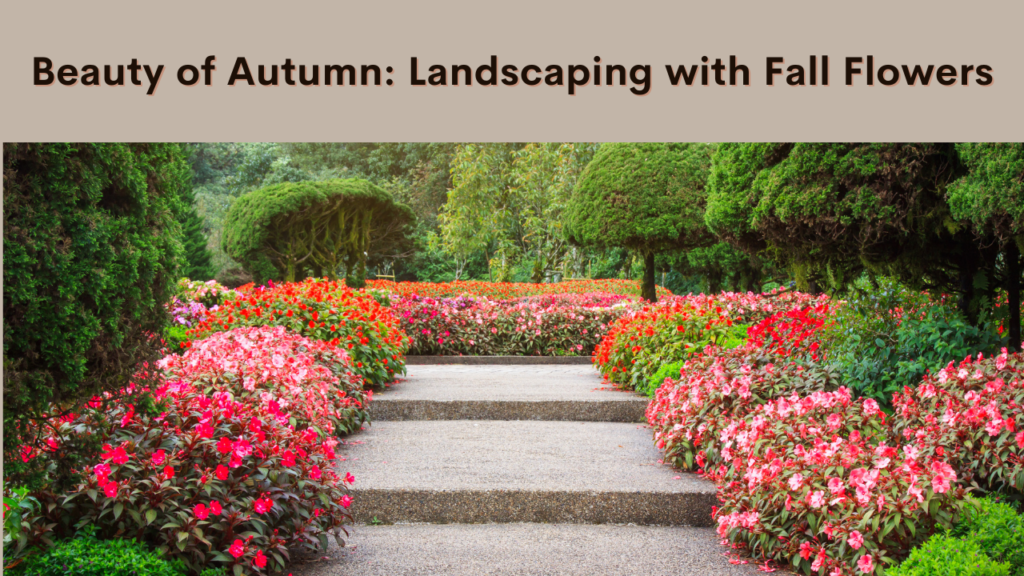
- Plant late-blooming perennials and annuals to infuse your garden with bursts of color during the fall season. Choose flowers like Chrysanthemums, Sedum ‘Autumn Joy,’ and Rudbeckia fulgida (Black-eyed Susan) to add pops of yellow, orange, and purple to your landscape.
- Pair these flowers with ornamental grasses or fall-blooming bulbs, such as Colchicum autumnale (Autumn Crocus), to create visually captivating combinations.
- Consider creating flowerbeds or clusters of autumn flowers near focal points like patios, seating areas, or windows to showcase their beauty and enhance your outdoor living spaces.
3. Hardscaping Elements

- Integrate hardscaping elements, such as walkways, retaining walls, and decorative stones, into your landscape design to add structure and visual appeal.
- Incorporate natural materials like stone or wood that complement the earthy tones of the season. These materials will seamlessly blend with the autumn landscape and create a warm, inviting atmosphere.
- Use hardscaping elements to create focal points or define specific areas within your outdoor space. Consider adding a cozy fire pit or a seating area surrounded by autumn-inspired plants and foliage for a charming gathering spot.
“Autumn is a second spring when every leaf is a flower.” – Albert Camus
By embracing the unique characteristics of autumn and incorporating them into your landscape design, you can create a visually stunning and captivating outdoor space. Let the rich colors, captivating textures, and natural elements of the season transform your garden into a sanctuary of beauty and tranquility.
Tips for Creating Visual Interest in Autumn Gardens
When it comes to autumn gardens, there are endless possibilities for creating visual interest that will captivate and inspire. By incorporating various elements like foliage, flowers, and hardscaping, you can transform your garden into a stunning showcase of fall beauty.
1. Play with Foliage Colors

One of the easiest ways to add visual interest to your autumn garden is by selecting plants with vibrant foliage colors. Autumn gardens are known for their rich reds, fiery oranges, and deep yellows. Consider incorporating plants like Japanese maples, burning bushes, and euonymus to infuse your garden with warm, fall hues.
2. Embrace Seasonal Flowers
Autumn gardens don’t have to be devoid of flowers. There are many beautiful blooms that thrive during this season. Creating visual interest can be as simple as adding chrysanthemums, asters, and sedums to your garden. These flowers will not only bring color but also attract pollinators, adding an extra layer of life and movement to your outdoor space.
3. Incorporate Hardscaping Elements
For a more structured and visually striking garden, consider incorporating hardscaping elements that complement the natural beauty of autumn. Stone pathways, wooden pergolas, and decorative fences can add depth and texture to your garden while creating focal points that draw the eye. These elements can also serve as a backdrop for your plants, highlighting their beauty and creating a cohesive design.
4. Create Contrast with Texture
Texture is an often overlooked but essential element in autumn gardens. Combine plants with different leaf textures to create contrast and visual depth. Pair the smooth leaves of grasses with the rough bark of trees or the delicate petals of flowers with the spiky foliage of sedums. Experimenting with texture will add dimension and intrigue to your garden.
Pro Tip: Don’t be afraid to mix and match different plant combinations to discover unique and unexpected pairings that create visual interest.
5. Add Ornamental Grasses
Ornamental grasses are excellent additions to autumn gardens due to their graceful movement and unique forms. Their airy plumes and changing colors add a touch of elegance and drama to any landscape. Consider varieties such as feather reed grass, fountain grass, and switchgrass to add height, texture, and visual interest to your garden.
6. Balance Shapes and Heights
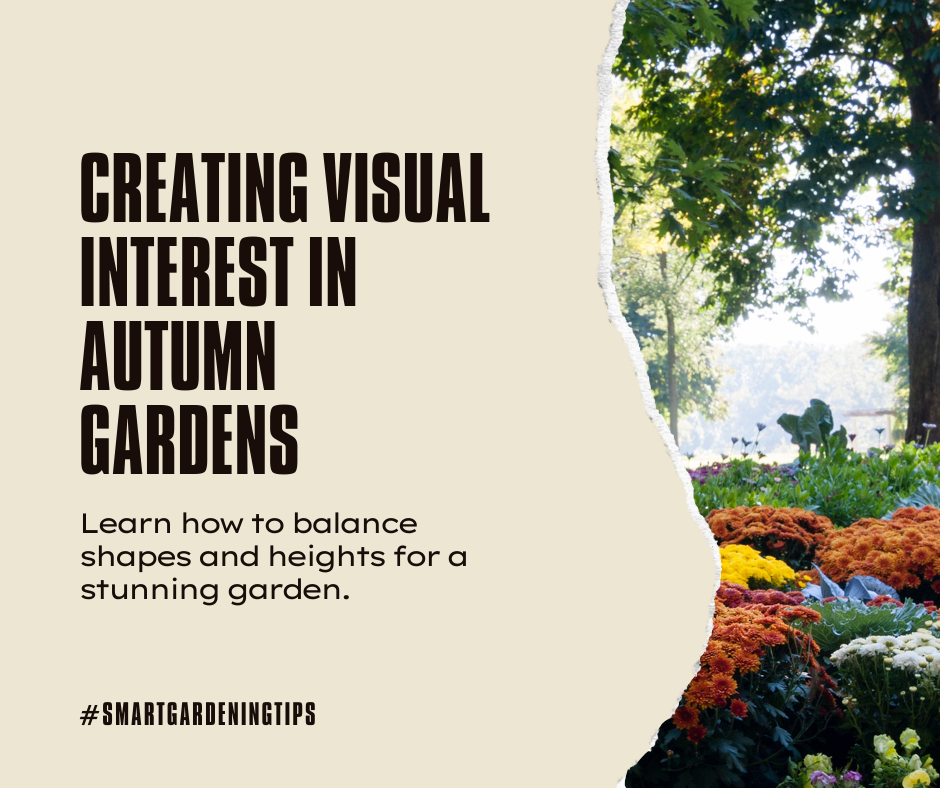
When designing your autumn garden, strive for balance and harmony by carefully considering the shapes and heights of your plants. Mix tall, upright plants with trailing or cascading varieties to create a visually pleasing balance. This contrast will add dynamic interest and ensure that no area of your garden feels overwhelming or neglected.
Pro Tip: As you create visual interest in your autumn garden, remember to consider the changing seasons. Plan for plants that will provide interest throughout the fall, such as those with colorful berries or attractive seed heads.
| Plant | Height | Color | Seasonal Interest |
|---|---|---|---|
| Japanese Maple | 10-25 feet | Red, orange, yellow, purple | Foliage color |
| Burning Bush | 6-8 feet | Fiery red | Foliage color |
| Chrysanthemum | 1-3 feet | Various colors | Flowers |
| Japanese Silver Grass | 4-6 feet | Multi-colored foliage | Texture, movement |
By following these tips, you can unleash your creativity and transform your autumn garden into a visual masterpiece. Whether you’re a novice gardener or a seasoned expert, there are endless possibilities to explore and experiment with. Enjoy the beauty of the fall season and let your garden become a captivating reflection of nature’s artistry.
FAQ
Q. How do I choose the right plants for autumn planting?
A. When selecting plants for autumn planting, consider choosing ones that are suitable for this season. Take into account your climate and soil conditions to ensure the plants will thrive. Research which plants are known to do well in autumn and consider their specific growing requirements.
Q. What are the important considerations for preparing for autumn planting?
A. Before starting autumn planting, it is essential to consider your climate and soil conditions. Assess the specific needs of the plants you want to grow and make any necessary amendments to the soil. Clear the area of any weeds or debris and ensure there is adequate drainage in place.
Q. How can I set up proper soil conditions for autumn planting?
A. To set up proper soil conditions for autumn planting, start by testing your soil’s pH level and nutrient content. Based on the results, amend the soil with organic matter or fertilizers to ensure it is rich in nutrients. Additionally, ensure the soil has good structure and drainage to support the growth of the plants.
Q. How should I plan and arrange my plants for autumn planting?
A. When planning and arranging plants for autumn planting, consider the aesthetics and flow of your garden. Choose a layout that complements the natural features of your space and enhances its visual appeal. Group plants with similar watering and light requirements together for easier maintenance.
Q. What are the ideal timings and temperature considerations for autumn planting?
A. The ideal timing for autumn planting depends on the specific plants you are growing. Research the recommended planting times for each variety to ensure you plant them at the right time. Pay attention to the temperature range as well, as certain plants may require specific temperature conditions for optimal growth.
Q. How should I care for and maintain my autumn-planted vegetation?
A. To care for autumn-planted vegetation, it is important to regularly water and fertilize the plants according to their specific needs. Monitor the moisture levels in the soil and adjust watering accordingly. Apply fertilizer as recommended to provide the necessary nutrients for healthy growth.
Q. How can I protect my plants from pests and diseases during autumn planting?
A. To protect your plants from pests and diseases, practice good garden hygiene by removing any dead or infected plant material regularly. Use organic pest control methods or appropriate insecticides when necessary. Pay attention to signs of disease or pest infestation and take prompt action to prevent further damage.
Q. How can I incorporate landscaping and aesthetics into my autumn garden?
A. Embrace the beauty of autumn by incorporating fall colors and textures into your landscape design. Choose plants with foliage and flowers that showcase the vibrant hues of the season. Consider adding elements such as decorative grasses, pumpkins, and seasonal decorations to enhance the overall aesthetic appeal.
Q. What are some tips for creating visual interest in autumn gardens?
A. To create visual interest in autumn gardens, consider layering different plants with varying heights and textures. Incorporate foliage with different colors and shapes to add depth to the garden. Additionally, incorporate hardscaping features such as paths, fences, or trellises to create visual focal points.
Conclusion
In conclusion, by implementing the tips and techniques for autumnal planting, you can ensure the continued beauty and health of your garden throughout the fall season. Incorporating the right plants, preparing the soil, and carefully planning the arrangement of your vegetation will contribute to a stunning autumn landscape.
Remember to consider timing and temperature, providing proper care and maintenance, and protecting against pests and diseases. These essential steps, combined with a creative approach to landscaping and aesthetics, will result in a visually captivating garden that showcases the unique charm of autumn.
As you embark on your autumnal planting journey, apply the knowledge and expertise gained from this article to transform your outdoor space. With a little dedication and attention to detail, you can create an enchanting autumn haven that will inspire and delight both yourself and your guests.



